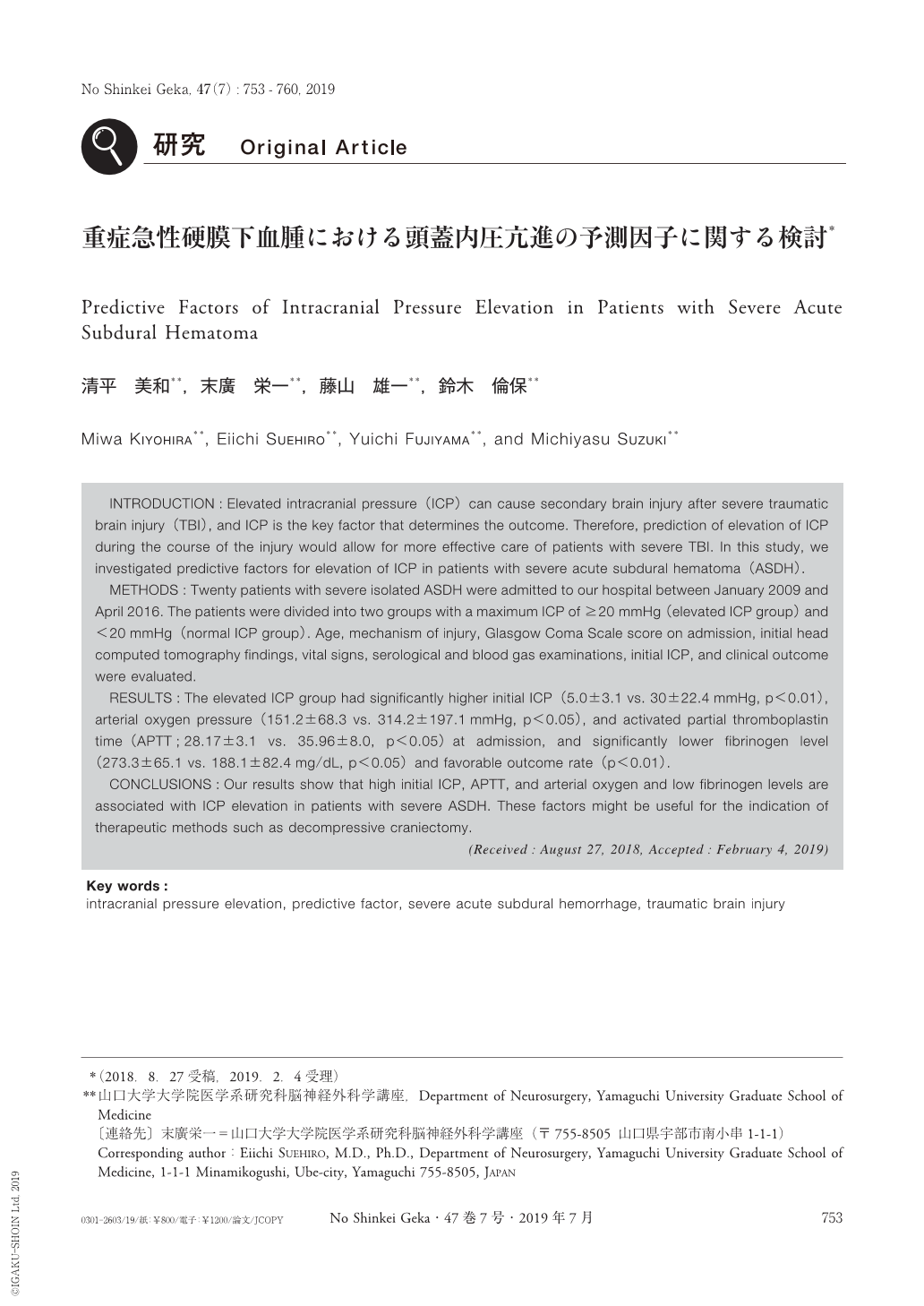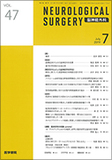Japanese
English
- 有料閲覧
- Abstract 文献概要
- 1ページ目 Look Inside
- 参考文献 Reference
Ⅰ.はじめに
重症頭部外傷患者における神経集中治療の目的は,二次性脳損傷の予防である.頭蓋内圧亢進は脳灌流圧を低下させ,二次性脳損傷により患者転帰が増悪するため,頭蓋内圧管理は厳重に行われなければならない2).また,頭蓋内圧亢進に対する治療は,内科的処置から外科的処置へと段階的に行うとされている.これらの処置の適切なタイミングを逃すと,脳ヘルニアとなり不可逆的な脳損傷に陥ってしまう.そこで,リアルタイムな頭蓋内圧測定が必要であり,また,頭蓋内圧亢進が予測される患者には,高度な管理体制の準備が重要となる.こうした管理体制を置くことにより,二次性脳損傷を最小限に抑えることが可能となり,患者転帰に寄与することが期待される.
そこで本研究では,当院に搬入された重症急性硬膜下血腫患者を対象に,頭蓋内圧亢進を予測し得る因子について後方視的に検討した.
INTRODUCTION:Elevated intracranial pressure(ICP)can cause secondary brain injury after severe traumatic brain injury(TBI), and ICP is the key factor that determines the outcome. Therefore, prediction of elevation of ICP during the course of the injury would allow for more effective care of patients with severe TBI. In this study, we investigated predictive factors for elevation of ICP in patients with severe acute subdural hematoma(ASDH).
METHODS:Twenty patients with severe isolated ASDH were admitted to our hospital between January 2009 and April 2016. The patients were divided into two groups with a maximum ICP of ≥20mmHg(elevated ICP group)and <20mmHg(normal ICP group). Age, mechanism of injury, Glasgow Coma Scale score on admission, initial head computed tomography findings, vital signs, serological and blood gas examinations, initial ICP, and clinical outcome were evaluated.
RESULTS:The elevated ICP group had significantly higher initial ICP(5.0±3.1 vs. 30±22.4mmHg, p<0.01), arterial oxygen pressure(151.2±68.3 vs. 314.2±197.1mmHg, p<0.05), and activated partial thromboplastin time(APTT;28.17±3.1 vs. 35.96±8.0, p<0.05)at admission, and significantly lower fibrinogen level(273.3±65.1 vs. 188.1±82.4mg/dL, p<0.05)and favorable outcome rate(p<0.01).
CONCLUSIONS:Our results show that high initial ICP, APTT, and arterial oxygen and low fibrinogen levels are associated with ICP elevation in patients with severe ASDH. These factors might be useful for the indication of therapeutic methods such as decompressive craniectomy.

Copyright © 2019, Igaku-Shoin Ltd. All rights reserved.


